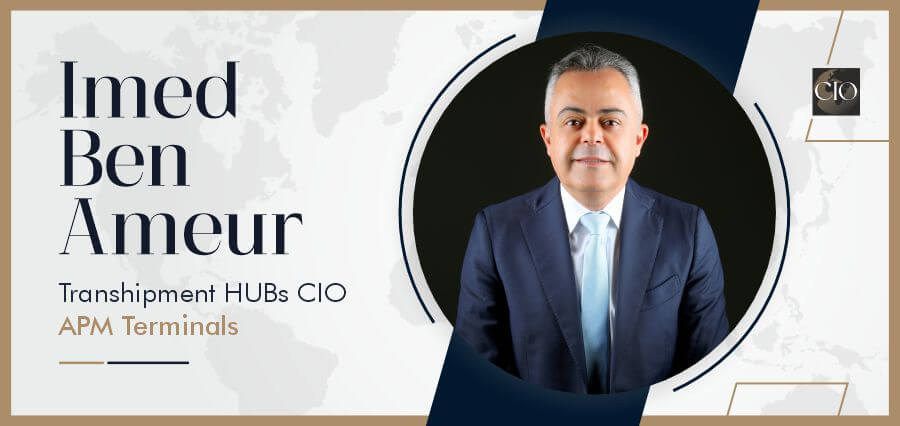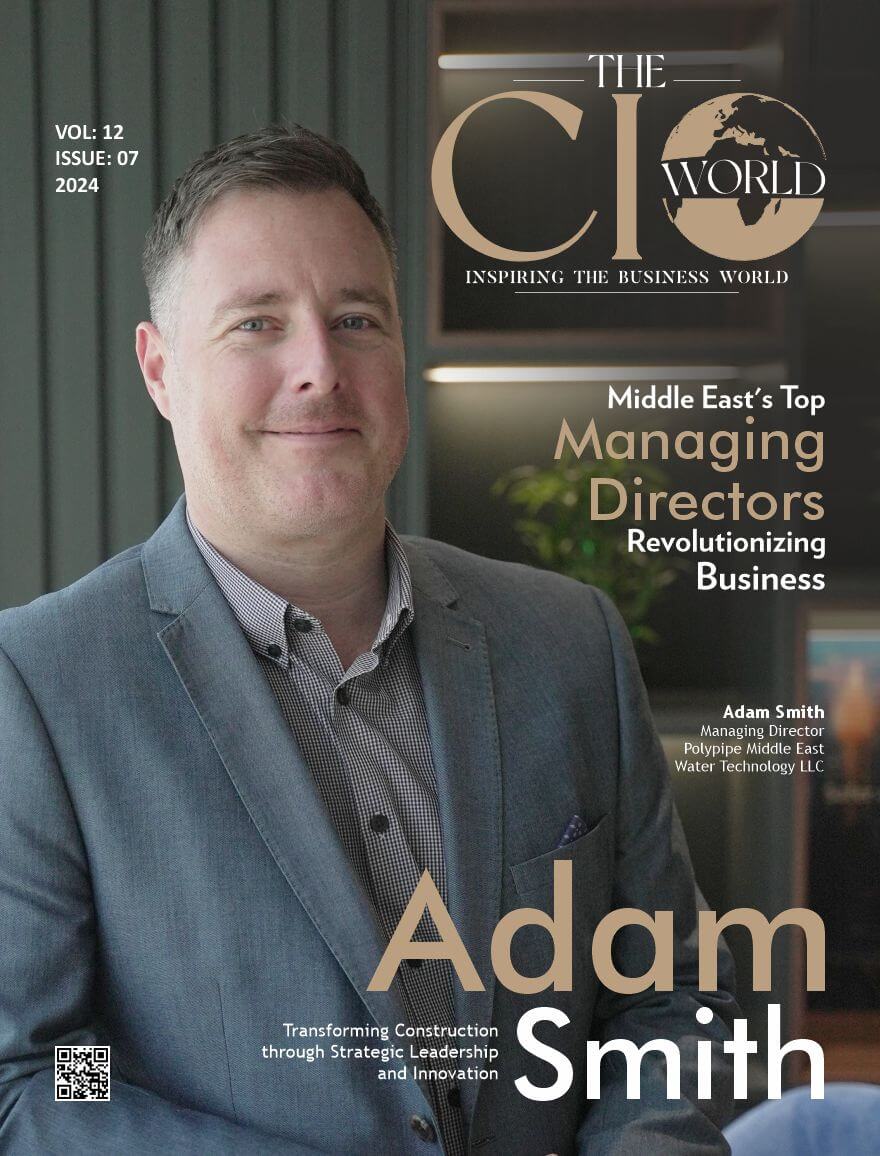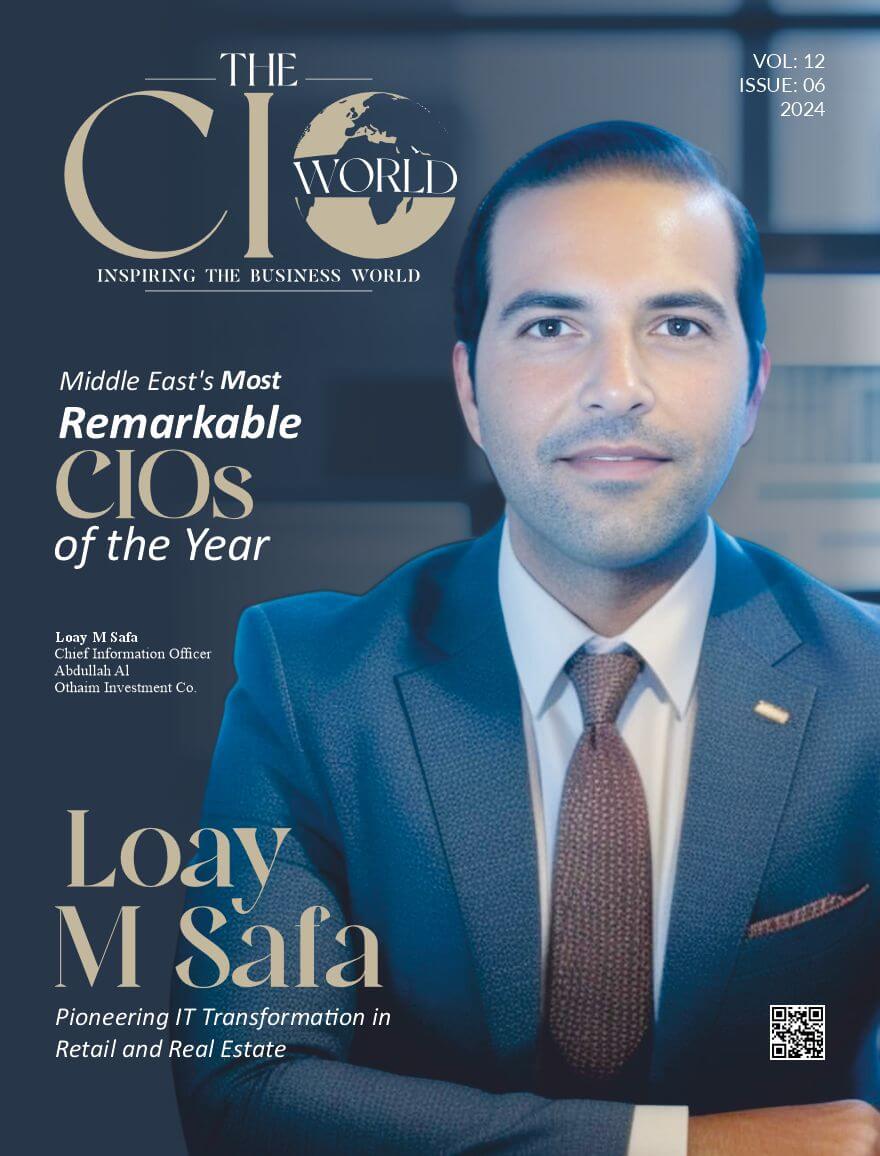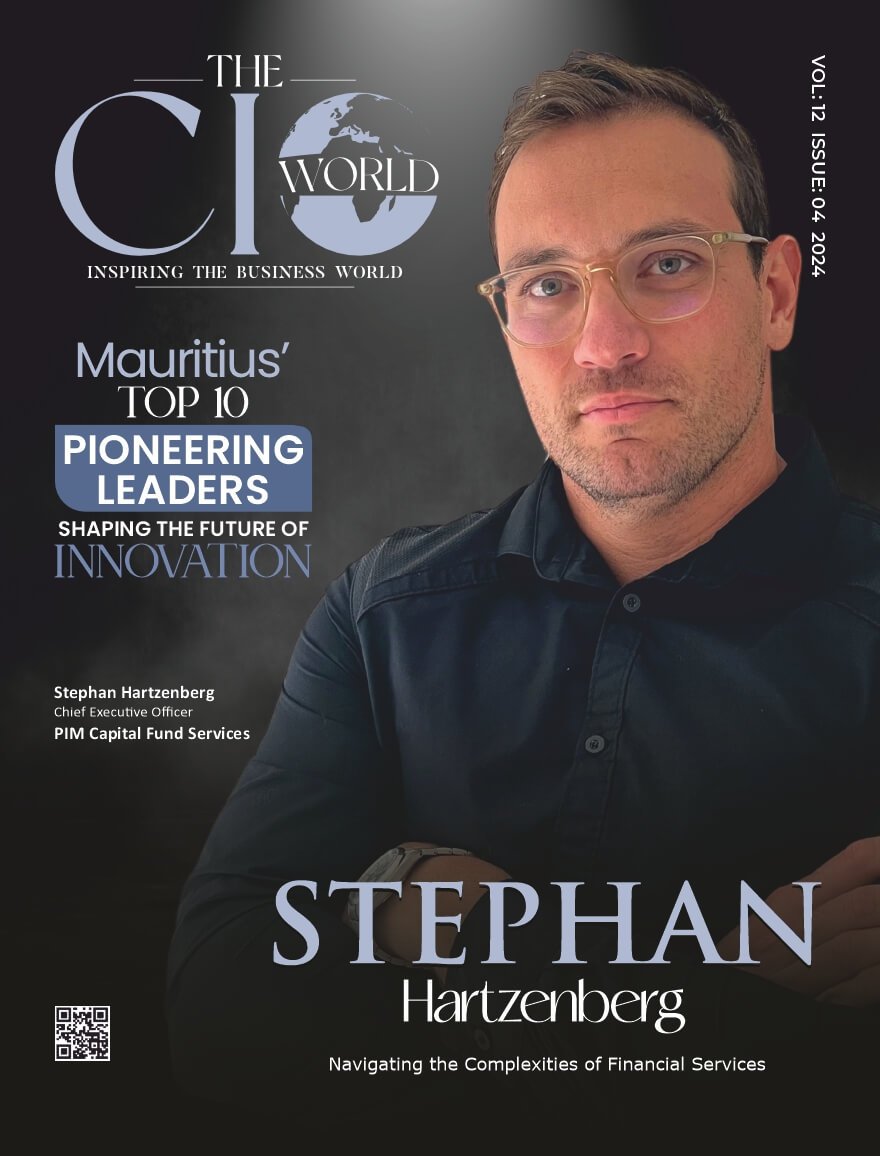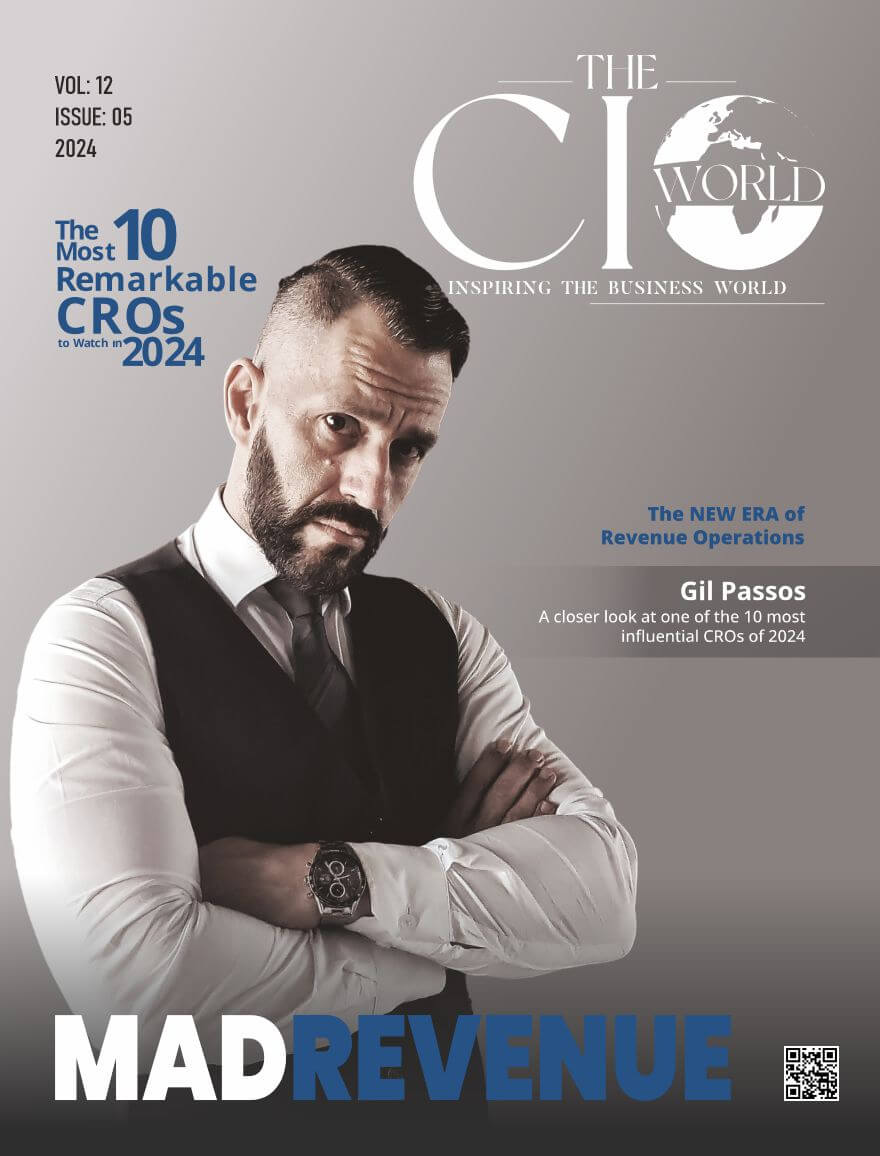Aligning Personal Passion with APM Terminals’ Transformation Journey!
There’s a certain electricity in the air when you’re contributing to an endeavour that is genuinely improving people’s lives. It’s the unmistakable feeling of being part of something bigger than yourself—a noble mission that transcends individual interests. Whether it’s volunteering for a cause you care about, working for a company aligned with your values, or simply doing small acts of kindness each day, the act of creating positive change is deeply gratifying.
“Driving meaningful change is what energizes me every day,” says Imed Ben Ameur, the Transhipment HUBs CIO at APM Terminals. “When you can tangibly see digital initiatives improving operations, enhancing customer experience, and creating new value, that’s true career satisfaction.” Imed’s three decades of experience have been defined by leading digital transformations across industries like
Oil and Gas, FMCG and now shipping and logistics with APM Terminals. The Tunisian native has a passion for leveraging technology to drive operational excellence and innovation.
After over a decade of building digital foundations for an oil and gas giant, allowing them to launch new customer offerings, Ben Ameur shifted to the FMCG world in 2015. He spent five years helping a global market leader accelerate their digital transformation across the IMEA region.
“My role was predominantly to build the required digital backbone and to streamline processes,” he explains. “This allowed for localized solutions tailored to diverse customer segments across international markets.” When the pandemic hit in 2020, Ben Ameur saw an opportunity to apply his cross-industry expertise to the historically tech-cautious shipping sector as APM Terminals’ new Transhipment HUBs CIO.
“APM Terminals vision for large-scale transformation across their global terminal network aligned perfectly with my own mindset of harnessing technology to drive meaningful change,” he says. “I was incredibly motivated to help digitize and optimize their core operations.”
In under three years, Imed has spearheaded strategic initiatives enhancing terminal operations through automation, data analytics, IoT, and more. His team’s innovations have enabled efficiency gains while strengthening APM Terminals capabilities as a digitally resilient enterprise.
“The pandemic was a wake-up call for our industry,” Imed states. “Those who embrace tech-driven agility and customer-centricity will thrive, while the technology laggards get left behind. I’m proud that APM Terminals is leading the digital change.”
Let us learn more about his journey:
Achieving Business Agility Through Holistic Strategy Alignment
APM Terminals recognizes that a holistic approach is crucial for achieving perfect alignment between their corporate objectives and business and technology strategies. This process begins with a thorough understanding of both tactical and strategic corporate objectives.
Next, APM Terminals meticulously assesses the current state of their technology infrastructure. This evaluation establishes a clear starting point and exposes the extent of any digital debt the company may have accumulated. Similarly, they evaluate the business’s current level of maturity in adopting specific technologies. This understanding is essential before defining the necessary technological foundations.
Following this assessment, APM Terminals identifies technological opportunities and trends that can be adopted or developed to expedite the realization of their business goals. The prioritization of initiatives and investments is then conducted based on their potential business impact and anticipated benefits. This prioritization is a critical element for the success of this approach.
While establishing and aligning execution roadmaps, APM Terminals also defines clear metrics to gauge progress. This allows for adjustments to be made as needed. Ultimately, the goal is to cultivate a culture of continuous improvement. This ensures that their strategies remain adaptable and responsive to ever-changing market dynamics and any evolving corporate constraints.
The Holistic Path to Strategic Alignment
Imed advocated for a holistic approach to ensure perfect congruence between corporate objectives and business and technology strategies. The journey commences by comprehending the corporate objectives, with both tactical and strategic goals being paramount. Then comes a critical understanding of the current technological landscape, clearly delineating the starting line and assessing the magnitude of the digital debt the company bears. Similarly, grasping the business’s maturity level in adopting certain technologies is equally crucial before defining the requisite technological foundations.
The subsequent step involves the definition of technological opportunities and trends to adopt or develop in order to expedite the realization of business objectives. Prioritization of initiatives and investments based on business impact and anticipated benefits is key to the success of such an approach.
While aligning the roadmaps for execution, clear metrics are defined to measure progress and make adjustments as needed. The ultimate goal is to foster a culture of continuous improvement, ensuring that strategies remain adaptable and responsive to evolving market dynamics as well as corporate constraints.
Ensuring Transformational Success
Imed recognizes the importance of clearly defining the value or outcome expected from each transformational initiative at the outset. This upfront clarity in expectations is crucial, even though achieving it can sometimes be challenging.
To measure the success of these initiatives, Imed employs a variety of methods tailored to each project. The most common approach leverages financial metrics like ROI (Return on Investment), NPV (Net Present Value), or cost savings as the primary benchmarks.
However, Imed acknowledges that financial metrics alone are insufficient in today’s context. Many transformational initiatives target benefits beyond just the bottom line. Imed considers a broader range of metrics to assess success, including:
- Customer satisfaction (measured by NPS: Net Promoter Score)
- Risk and compliance maturity
- Employee engagement (measured by retention/turnover rate)
- Gaps to industry standards in areas like time to market, brand equity, and customer acquisition cost
Driving Transformation Through Engaged Workforce
- Imed emphasizes the importance of achieving clarity on objectives and fostering collective ownership of corporate strategic goals and priorities. This necessitates an “Enterprise FIRST” approach, prioritizing the overall company vision over fragmented agendas within individual functions or divisions.
- To ensure everyone is aligned, Imed prioritizes clear communication of the company’s vision and direction. Leaders play a vital role by actively enabling and empowering cross-functional teams. They set these teams up for success by ensuring they are all rallying behind the company’s vision and ambition.
- Maintaining momentum and high team engagement are crucial. Imed recognizes the importance of continuously recognizing and celebrating successes, even for smaller milestones.
- In today’s fiercely competitive tech talent market, Imed understands the need for a compelling and attractive employee value proposition (EVP) to attract and retain top talent. This challenge has been present for the past decade across various technology skills and is expected to continue with emerging trends demanding highly specialized expertise.
- Imed’s EVP emphasizes the company’s strong values and principles. It offers a rewards program that incentivizes individual excellence while maintaining an “Enterprise FIRST” mindset as the overarching standard for success. Additionally, Diversity, Equity, and Inclusion (DEI) are embedded in the company’s DNA, fostering a diverse and inclusive work environment that supports employee well-being and continuous growth and development.
Philosophy on Nurturing Talent
Imed firmly believed that continuous learning and feedback were fundamental pillars of success.
Empowering employees and exposing them to novel challenges nurtured their professional growth, a stance he staunchly advocated. Recognizing and celebrating achievements, he posited, were potent tools for maintaining high engagement and peak performance among talented individuals.
Furthermore, Imed championed cross- functional team collaboration, providing employees with exposure to new domains and opportunities to expand their skill sets. He found that a harmonious blend of on-the-job training and targeted academic learning modules yielded immense value for both the company and its employees alike. This holistic approach allowed talent to blossom and ensured the organization remained agile and adaptive in an ever-evolving business landscape.
Leadership Approach in a Matrixed and Global Environment
For Imed, a profound comprehension of the specific context and structure within which one operates was of paramount importance. This understanding, he believed, allowed for effective navigation through the highly matrixed and global business landscapes that define modern enterprises. Throughout his past and present assignments with multinational organizations, Imed has consistently emphasized the necessity of agility, strong adaptability, and deep respect for cultural differences.
He recognized that the ability to deftly manoeuvre within complex organizational structures and diverse cultural environments was a critical skill for any leader aspiring to drive meaningful change and progress.
Imed’s approach centred on cultivating a keen awareness of the complex dynamics at play, embracing the richness of diverse perspectives, and harnessing the power of collaboration across boundaries.
Building Trust and Networks for Transformation
As a transformative leader, Imed upheld the belief that building trust and cultivating robust internal networks were essential cornerstones for successfully driving any transformative agenda. His approach was a meticulously crafted blueprint designed to catalyze lasting change within organizations.
Central to this blueprint was the clear communication of the visionary narrative, coupled with continuous efforts to onboard others and secure their stanch buy-in. He understood that true transformation could only be achieved through the alignment of hearts and minds, fostering a shared sense of purpose and direction among all stakeholders.

